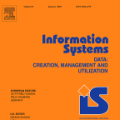Semantic communication is not focused on improving the accuracy of transmitted symbols, but is concerned with expressing the expected meaning that the symbol sequence exactly carries. However, the measurement of semantic messages and their corresponding codebook generation are still open issues. Expansion, which integrates simple things into a complex system and even generates intelligence, is truly consistent with the evolution of the human language system. We apply this idea to the semantic communication system, quantifying semantic transmission by symbol sequences and investigating the semantic information system in a similar way as Shannon's method for digital communication systems. This work is the first to discuss semantic expansion and knowledge collision in the semantic information framework. Some important theoretical results are presented, including the relationship between semantic expansion and the transmission information rate. We believe such a semantic information framework may provide a new paradigm for semantic communications, and semantic expansion and knowledge collision will be the cornerstone of semantic information theory.
翻译:语义通信的重点不是提高传输符号的准确性,而是关注表达符号序列确实具有的预期含义。然而,语义信息及其相应的代码生成的测量仍然是尚未解决的问题。扩展将简单的事物纳入复杂的系统,甚至生成智能,与人类语言系统的演进真正一致。我们把这个想法应用于语义通信系统,用符号序列来量化语义传输,并以与香农的数字通信系统方法相似的方式调查语义信息系统。这项工作是第一个讨论语义扩展和语义信息框架中知识碰撞问题的工作。介绍了一些重要的理论结果,包括语义扩展和传输信息率之间的关系。我们认为,这样的语义信息框架可以为语义通信提供新的范例,语义扩展和知识碰撞将成为语义信息理论的基石。





